|

 Up
Up 
 Wright Timeline 1910
to 1919
Wright Timeline 1910
to 1919 
(You
are here.)
 Down
Down




  Need
to Need
to
find your
bearings?
Try
these
navigation aids:
If
this is your first
visit, please stop by:
Something
to share?
Please:



|
|
Available in Française, Español, Português, Deutsch, Россию,
中文,
日本, and others.
 o
invention, no scientific discovery, no work of art, no human
endeavor happens in an historical vacuum. There are always other
factors -- cultural, political, personal -- that influence the
outcome of a single event. So it was with the invention of the
airplane. When Wilbur and Orville were children, the abacus was the most
advanced mathematical aid, influenza was an often-fatal disease, and
the cannon was the most feared weapon of war. By the time Orville
died, the first computers were just being built, antibiotics had
begun to wipe out disease, and the atomic bomb made war
unthinkable. Many of these advances influenced the development of
the airplane -- and the airplane, in turn, influenced further
advances. o
invention, no scientific discovery, no work of art, no human
endeavor happens in an historical vacuum. There are always other
factors -- cultural, political, personal -- that influence the
outcome of a single event. So it was with the invention of the
airplane. When Wilbur and Orville were children, the abacus was the most
advanced mathematical aid, influenza was an often-fatal disease, and
the cannon was the most feared weapon of war. By the time Orville
died, the first computers were just being built, antibiotics had
begun to wipe out disease, and the atomic bomb made war
unthinkable. Many of these advances influenced the development of
the airplane -- and the airplane, in turn, influenced further
advances.
Here is chronology that shows not just the story of the Wright
brothers, but also the world they lived in and the important political,
cultural, and scientific events that loomed large in their lives. Click on the
decade you want to see:
|
 |
Time
|
The Wright
Story
|
The Bigger
Picture
|
|
1910 |
The Wright brothers open the first civilian flight
training school in Montgomery, Alabama. They also introduce
their most successful commercial aircraft, the Wright Model
B.
|
 |
Frank Lloyd Wright is recognized internationally for his
contributions to architecture.
|
 |
|
1911 |
The Vin Fiz, a Wright airplane piloted by Cal
Rogers, crosses America in 84 days. The Wright Company
delivers the US Navy's first airplane, and Orville sets the
world's first soaring record, remaining aloft in a glider for
9 minutes and 45 seconds.
|
 |
Charles Kettering, a friend of the Wrights, develops
develops a modern ignition system and a self-starter for
automobiles. Roald Amundsen reaches the South Pole.
|
 |
|
1912 |
Wilbur Wright dies of
typhoid in Dayton, Ohio. Orville and his sister Katharine acquire land in
Oakwood, Ohio where they will build a new home, Hawthorne
Hill.
|
 |
The S.S. Titanic sinks on her maiden voyage
and 1513 people are drowned. Carl Jung publishes his
Theory of Psychoanalysis.
|
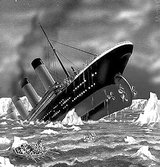 |
|
1913 |
Orville Wright wins the Collier Trophy for the development
of the automatic stabilizer. The Wright Company introduces
its first water-based aircraft, the Model CH hydro-airplane
and Model G aeroboat. A disastrous flood in Dayton submerges
the Wright home.
|
 |
Henry Ford introduces the moving assembly line. Mahatma
Gandhi, proponent of "passive resistance" for political
change, is arrested for the first time.
|
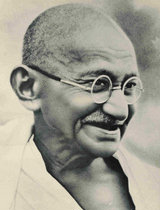 |
|
1914 |
U.S. courts
decide in favor of the Wrights in their suit against
Curtiss, and the' 1906 patent becomes the "grandfather"
patent of the airplane. To counter this judgment,
Curtiss
rebuilds the 1903 Langley Aerodrome, makes many
improvements, flies it and claims his experiment shows that
an aircraft may
have flown before the Wright Flyer.
|
 |
War is declared in Europe and quickly expands to become
World War I. It is the first conflict to use airplanes
extensively as fighters, bombers, and reconnaissance.
The Panama Canal opens and Robert Goddard begins his first
rocketry experiments.
|
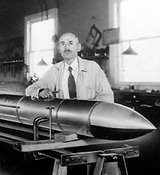 |
|
1915 |
Orville Wright sells
the Wright Company and his patents to a
group of investors in New York. The Smithsonian
publishes its 1914 Annual Report claiming that Langley's Aerodrome was the
first manned aircraft "capable of flight," citing
Curtiss' flights in the modified Aerodrome.
This begins a
bitter feud with Orville Wright.
|
 |
Margaret
Sanger is jailed for writing a book on birth control and
the U.S. Lifesaving Service — which helped the Wrights
launch their first airplane — is recast as the U.S. Coast
Guard.
|
 |
|
1916 |
The Wright Company produces its last airplane, the Model
L. Orville Wright restores the 1903 Flyer I for a
display at the Massachusetts Institute of Technology and
buys Lambert Island in Lake Huron to serve as a summer home.
|
 |
Paul Langevin invents sonar to detect submarines, the
U.S. National Park Service is established, and jazz
emerges as a distinct form of American music.
|
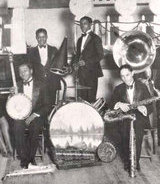 |
|
1917 |
Orville Wright lends his name
to the Dayton-Wright Airplane Company and serves as an
engineering consultant. The company builds airplanes for the
U.S. Army. His father, Milton Wright, dies.
|
 |
The United States enters World War I
and the October Revolution makes Russia the first socialist
state. |
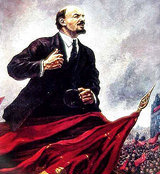 |
|
1918 |
Orville Wright
flies a Wright Model B for a celebration in Dayton --
the last time he pilots an airplane. With Fred Nash,
Orville designs the Liberty Eagle, an unmanned
"aerial torpedo." It is the forerunner of the guided
missile.
|
 |
World War I
ends, the U.S. Post office offers the first regular air mail
service, and a world-wide flu epidemic kills 22 million
people.
|
 |
|
1919 |
Orville designs the OW.1 Aerial Coupe for the Dayton
Wright Airplane Company. It's a luxurious four-place cabin
biplane, and the last aircraft either of the Wright brothers
ever designed. |
 |
Women get the right to vote in the United States and the
League of Nations — the forerunner of
the United Nations — is founded.
|
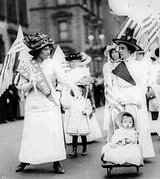 |
|
|
|
|